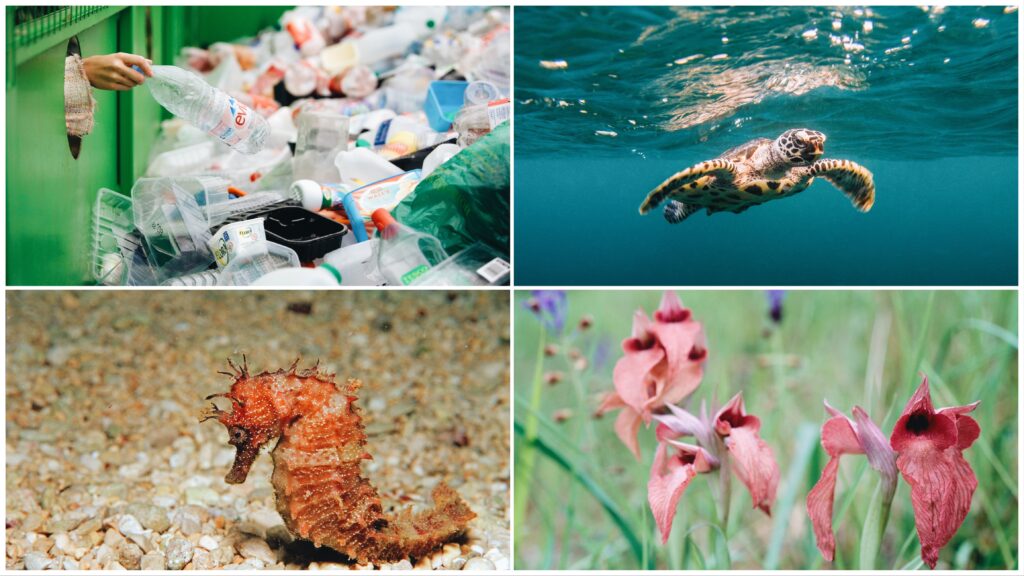Some days it feels like there’s nothing but bad news about the natural world. Environmental destruction, pollution, and insufficient climate interventions rule the headlines. But while there’s a lot (and we do mean a lot) going wrong, sometimes there’s some good climate news, too. There are fantastic success stories, innovative solutions, futuristic technologies, and stunning wildlife discoveries, all spearheaded by people who care enough to try.
Over the last year, coronavirus lockdowns have shown the speed with which nature can heal. A 50 percent reduction in car travel worldwide led to visibly clearer skies, while a wildlife boom filled the gap left by 2020’s “anthropause” in national parks, the ocean, and even urban areas. In general, there has been less noise, less pollution, and cleaner water, all of which helped the environment to “bounce back.”
Beyond optimism, there is power to be found in positivity—and hope encourages action. We’re introducing this column to highlight positive environmental news because we all deserve a silver lining, a moment to feel good, and a reminder that solutions to the climate crisis take a global village.

30 Rehabilitated Sea Turtles Are Going Home
The good news: The Turtle Rehabilitation Project (spearheaded by luxury hotel company Jumeirah Group), just re-released 30 sea turtles into the Arabian Gulf on World Sea Turtle Day (June 16). Following their rescue, the Hawksbill, Green, and Loggerhead turtles enjoyed an extensive recovery period under expert supervision and returned to the wild where they belong.
The impact: These endangered animals play a vital role in ocean health. They maintain healthy seagrass beds and balance the aquatic food web, while the Hawksbill turtle, in particular, plays an irreplaceable role in coral reef health. Because of this, getting 30 sea turtles back into their natural habitat will have a significant, positive impact on the region’s marine environment. Good news for the climate.
Did you know? Sea turtles take decades to mature, have similar life spans to humans (more than 50 years), and can swim thousands of miles during their lifetimes. The animals wait decades before they can reproduce, typically returning years later to the same beaches on which they were born to lay their own eggs. When females come ashore to nest, they also help to facilitate nutrient cycling (an essential part of any ecosystem) between land and sea.
How you can help. The Turtle Rehabilitation Project itself is related to and funded by ecotourism. But you can support the conservation efforts of nonprofit organizations such as the Costa Rican Alliance for Sea Turtles, the Turtle Foundation, and Turtles For Tomorrow. Click here to learn more about sea turtles in general.

Scientists Are Reducing Plastic Waste By Turning It Into… Vanilla Flavoring?
The good news: Plastic waste is a huge problem. (Note to self: don’t think about microplastics.) But earlier this month, research published in the academic journal Green Chemistry showed how scientists are using genetically engineered microbes to convert polyethylene terephthalate (PET) into vanillin.
The impact: You can find this widely used organic compound in flavorings and foods, perfumes and cosmetics, and even pharmaceuticals. Currently, global demand far exceeds the available supply of natural vanilla beans. According to The Guardian, producers synthesize approximately 85 percent of all vanillin from fossil fuel-derived chemicals. But this new microbe-based technology could help turn the industry green.
Did you know? Scientists already employ mutant enzymes to break down plastic into its most basic components. The new research shows that they can then transform this into vanillin. According to the researchers themselves, this marks the first time a valuable chemical has been brewed using waste plastic. Another significant step towards a fully closed system or circular economy.
How you can help: The Ellen MacArthur Foundation explains the circular economy in detail here, and you can learn how to implement this model in your own home here. For more neat products made with recycled plastic, check out the WWF’s list here. If you’re looking to minimize your own plastic use, check out LIVEKINDLY’s guides to a zero-waste kitchen, hair care, and fashion.

Ultra Rare Seahorse Spotted Just Off the Southern UK Coast
The good news: British biologists have just spotted the extremely rare long snouted (or “spiny”) seahorse near Plymouth, Devon. The Ocean Conservation Trust (OCT) team found the elusive creature during a routine seagrass habitat monitoring dive.
Mark Parry, an OCT development officer, told the BBC: “In seven years and probably several hundred seagrass survey dives, I’ve never seen one of these animals.”
The impact: The rare seahorse is a Priority Species in the UK, and is considered a “Feature of Conservation Importance” for which Marine Conservation Zones can be dedicated. Seahorses are essential predators and eat bottom-dwelling organisms and minute crustacea (such as Mysis Shrimp). Because of this, protecting them is an integral part of protecting the ecosystem as a whole—particularly along the unique South Western coastline.
Did you know? Currently, the IUCN Red List doesn’t include the long snouted seahourse due to insufficient data. But according to the Wildlife Trust, experts previously listed the creature as Vulnerable (VU). The almost continual lack of sightings reported by OCT scientists speaks for itself.
How you can help: There are lots of ways to support the OCT, including donations, fundraising, and volunteering, as well as helping to spread awareness about the organization’s work. OCT emphasizes the importance of education and outreach in coastal protection. To learn more about seahorses, in particular, check out the Seahorse Trust.

Thought to Be Extinct Orchid Found on a Rooftop in London
The good news: A gardener just found an extremely rare orchid in the rooftop garden of a London office building. The green space (owned by Japanese investment bank Nomura) is now home to a 15-plant colony—the only one in the UK. As reported by The Guardian, garden manager Mark Patterson explained that orchid seeds are incredibly small and could potentially travel to the rooftop via the same southerly winds that bring Saharan dust particles to the city.
The impact: This is only the second time the species has ever been observed in the UK. Many commentators, botanists, and orchid experts are overjoyed by its confirmed presence. As Mike Waller, practising ecologist and co-author of Britain’s Orchids (2020), said:
“To find Britain’s second colony of small-flowered tongue orchids is exciting in itself, but to find them on a green roof in the City of London is extraordinary. This is clear evidence that with patience and dedication, even the most unlikely places can become havens for some of our rarest wildlife.”
Did you know? The Serapias parviflora, or small-flowered tongue orchid, was last found in Cornwall over 30 years ago. Unfortunately, land mismanagement destroyed the original colony in 2009. It hasn’t been seen since, until now.
How you can help: To learn more about British plants, check out the Botanical Society of Britain & Ireland. Or, for information about planting bee-friendly plants for pollinators in the U.S. and Canada (even on top of your apartment building), take a look at the Pollinator Partnership’s Ecoregional Planting Guides. For zero-waste gardening tips, read LIVEKINDLY’s guide here.

Animals, Not Humans, Have Regenerated Half of Two New Woodlands in the UK
The good news: According to a new study, animals have helped to rewild two abandoned areas of farmland in Cambridgeshire, England. Animals such as jays, grey squirrels, and mice are the primary dispersal mechanism for acorns, and both areas now show over 50 percent oak coverage. Simultaneously, thrushes and smaller birds have helped distribute the seeds of hawthorn, bramble, blackthorn, and rose, which acted as natural tree-guards for the (relatively) new oaks.
The impact: The research makes an incredibly persuasive case for “passive rewilding,” something historically sidelined by many in favor of more hands-on conservation efforts. The New Wilderness (unused since 1996) and the Old Wilderness (unused since 1961) both showed rapid tree growth and comprehensive coverage, with the latter approaching the structure of nearby ancient woodland after just 53 years of new growth.
Did you know? Some of the most diverse shrubland in the UK includes road sidings and the humble hedgerow specifically due to the lack of direct human intervention. In the case of Cambridgeshire’s two new woodlands, the accumulation of deadwood and other natural processes have helped to promote biodiversity, nutrient flow, and carbon storage. Passive rewilding could be good news for climate mitigation thanks to its low-impact and cost-effective nature.
“Our study provides direct empirical evidence that passive rewilding has the potential to expand native woodland habitat at very low cost and within relatively short timescales,” write the authors.
How you can help: Learn more about rewilding from Rewilding Britain and Rewilding Earth, or read the books Rewilding North America (2004) and Feral (2013) by David Foreman and George Monbiot, respectively. You can also support local, national, and world organizations carrying out rewilding projects, including Trees For Life, Re:Wild, and Rewilding Europe.


